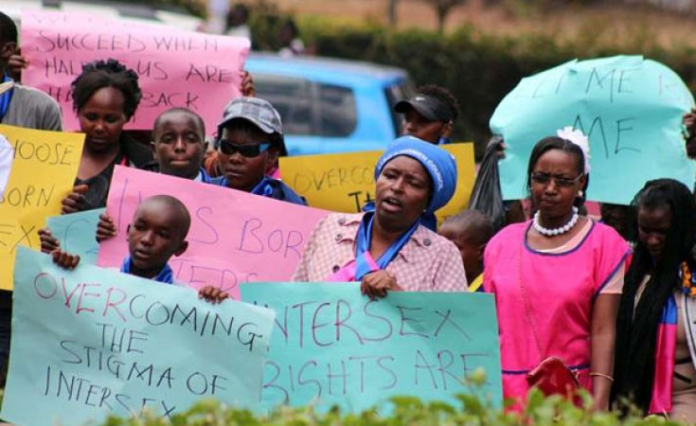Intersex individuals, representing the third gender, have officially been included in the latest gazetted sample of birth notification certificates. This development comes after years of advocacy and is a significant step forward in the inclusion of individuals born with both male and female genitalia.
The Gazette notice, under Legal Notice 153 of 2025, marks a major achievement for campaigners who have long sought policy reforms to recognize the intersex community.
The new sample of birth certificates now includes the usual binary genders of male and female, as well as intersex.
While the 2019 Census recorded 1,524 intersex individuals, making up 0.003% of the population, the actual number is likely much higher. There is no formal system for tracking intersex individuals, and many families choose not to disclose their intersex members due to stigma.
The Kenya National Commission on Human Rights (KNCHR) estimates that the true number could be as high as 1.4 million.
The push for intersex rights began in 2009 with the case of Baby A, who, through lawyer John Chigiti (now a High Court judge), challenged the discrimination faced by intersex people.
Baby A’s gender was marked as a ‘?’ on her birth certificate due to her intersex status, which led to difficulties in obtaining essential documents such as national identity cards and passports. The lack of a clear gender marker also made it difficult for intersex individuals to apply for jobs, as they didn’t fit into the male or female categories.
Following the case, the court ordered a national census to better understand the intersex population and ensure their rights are recognized.
The census findings spurred further legal and educational reforms, including recommendations to integrate intersex issues into the education curriculum and introduce a third gender marker, ‘I’, alongside male and female categories.
Veronica Maina, chairperson of the KNCHR Secretariat, praised the government’s move to officially recognize intersex as a gender on birth certificates, calling it a “long overdue step” towards a truly inclusive society. She emphasized the importance of legal recognition to ensure intersex individuals’ rights are fully respected.
Dennis Wamalwa, a KNCHR commissioner and an intersex person, has been at the forefront of efforts to separate intersex identity from LGBTQ+ issues. Wamalwa believes this separation is crucial for ensuring that intersex individuals receive the protection and care they need without being caught in the political and social controversies surrounding LGBTQ+ topics.
“We must ensure that intersex individuals are accepted and supported for who they are,” Wamalwa said. “It is vital to make sure the progress made in securing intersex rights is safeguarded, as it is not a choice to be intersex; it is beyond control.”
Wangui Macharia, an intersex activist, also expressed strong support for the delinking of intersex identity from the LGBTQ+ community. She highlighted that the challenges faced by intersex individuals are unique and should be treated as such. According to Macharia, distinguishing intersex as a separate identity will help protect them from the stigma associated with the LGBTQ+ community.
“It’s crucial that intersex individuals are shielded from religious and social prejudices and are given the necessary support without the negative connotations tied to LGBTQ+,” she said. “This move to secure their independent identity is both timely and necessary.”







